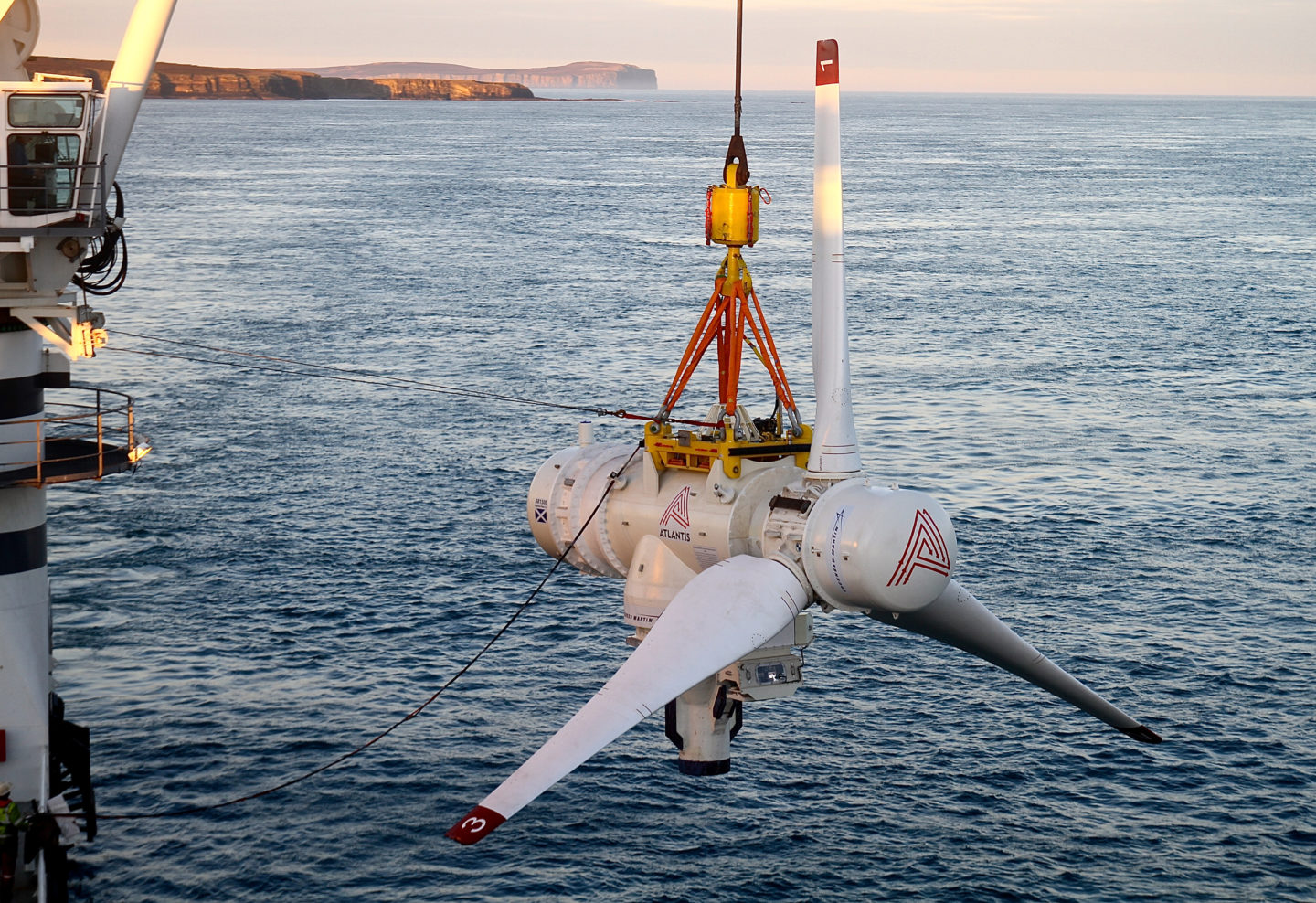At a glance
- Tidal or ‘lunar’ power, which uses the energy of tidal patterns, is an emerging sustainable energy source.
- It is unique in that it is more reliable than other renewable energy sources.
- SIMEC Energy Atlantis, a member of the GFG Alliance, is developing a tidal stream project between mainland Scotland and the Island of Stroma, taking advantage of a natural water tunnel between the North Sea and the Atlantic Ocean which boasts some of the fastest flowing waters in the UK.
When we think of sustainable energy, usually our first thoughts jump to solar, wind or hydro.
Our team is working hard on another option, which we believe will become a critical component of providing clean, sustainable power to society – Tidal power, or lunar power as some people refer to it, in recognition of the moon’s role in regulating tidal patterns.
Just off the coast of the most northern point of mainland Scotland, just south of the uninhabited Island of Stroma, and close to where Queen Elizabeth, and the Queen Mother, went to escape London and the world, SIMEC Atlantis Energy is developing a tidal stream project called MeyGen, which will with a capacity of up to 298 megawatt (MW) per annum – enough to power around 100,000 homes at completion.
Tidal power is unique in that it is more reliable than other forms of renewable energy generation, like solar or wind – and it comes in several forms. Tidal Barrage power utilises the energy made from the difference in height between low and high tides. Tidal Stream generators, however, rely on turbines similar to those seen in wind farms, to convert water movement below the ocean’s surface into electricity.
Its location between mainland Scotland and the Island of Stroma means that the project can take full advantage of the natural water tunnel between the North Sea and the Atlantic Ocean, boasting some of the fastest flowing waters in the UK.
When constructed, each turbine is built on an individual foundation, and weighing anywhere between 250 and 350 tonnes – not to mention the 6 ballast blocks (1,200 tonnes) that will provide the turbines stability over their lifetime.
SIMEC Atlantis Energy has planned the MeyGen project into phases. The first phase will see the deployment of four turbines, producing enough energy to power more than 2,500 homes. These early turbines will soon be joined by another 49, producing an extra 73 megawatts of power, and bringing the project closer to its end goal.
For now, the MeyGen project is the largest planned tidal stream project in the world, and the only multi-turbine array under construction.
Our investment into energy projects like Tidal is just the beginning of GFG Alliance’s vision to create a sustainable world for industry and society. A world where communities, businesses and energy are supported generationally through sustainable means.
Learn more about SIMEC Atlantis Energy

